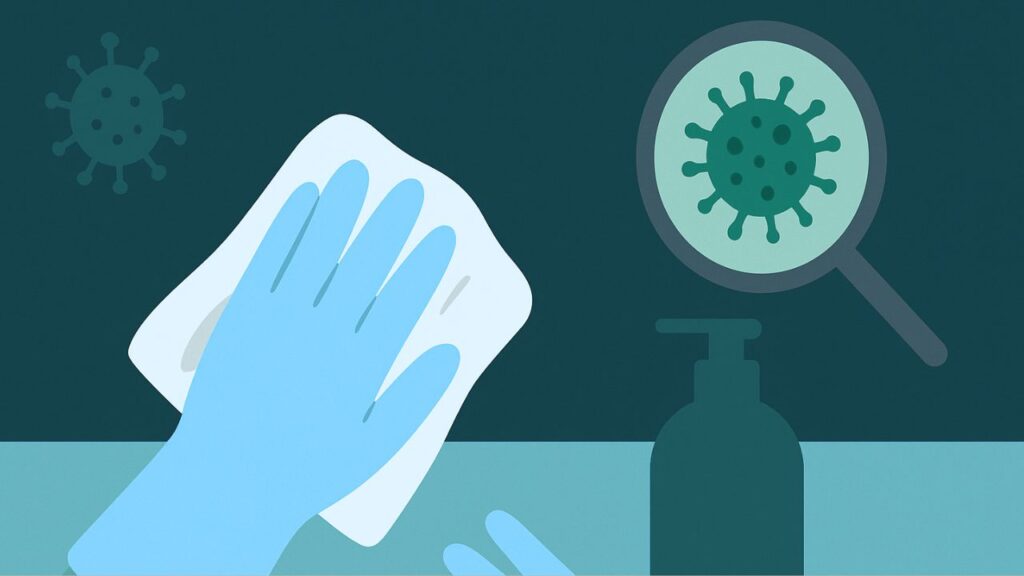When we think about cleaning, we usually picture shiny floors, spotless bathrooms, and sparkling kitchens. But what we can’t see may be even more important: the bacteria and germs that linger on surfaces. Not all bacteria survive the same amount of time, and knowing these details can help us make better cleaning decisions.
The lifespan of bacteria depends on the surface
The amount of time bacteria can live outside the human body varies depending on:
- The type of bacteria (E. coli, Salmonella, Staphylococcus, etc.).
- The surface (porous like fabric or wood, or smooth like steel or glass).
- Environmental conditions (temperature, humidity, sunlight).
Some common examples:
- Stainless steel and plastic (tables, doorknobs, toys): many bacteria can survive from hours to several days.
- Clothing and fabrics: these retain moisture, allowing bacteria to live up to 24–48 hours.
- Wood surfaces: being porous, they can absorb contaminated liquids; some bacteria survive for a few hours, while others may hide for longer.
- Phones, keyboards, and remote controls: due to constant use and the heat they generate, bacteria can remain for days or even weeks if not cleaned.
Not all bacteria are harmful
It’s important to note that not all bacteria are dangerous. Our environment is full of microorganisms, and only some are responsible for illness. Still, keeping up with regular cleaning habits helps reduce the risk of infections and allergies.
Practical tips for your home
- Frequently clean and disinfect high-touch surfaces: doorknobs, light switches, cell phones.
- Wash clothes after going to the gym, using public transportation, or traveling.
- Avoid leaving food residue on tables or appliances.
- Use clean, disinfected cloths to prevent spreading bacteria from one place to another.
Conclusion
Bacteria don’t disappear as quickly as we might think: some die within hours, but others can last for days. The good news is that with proper cleaning routines, you can keep your home safe and minimize health risks for your family.



